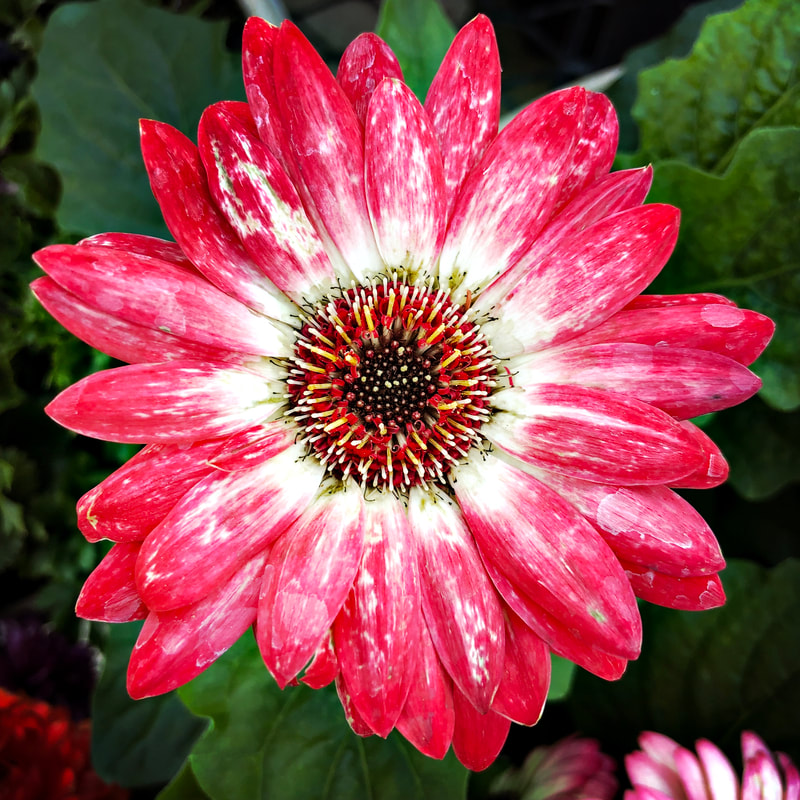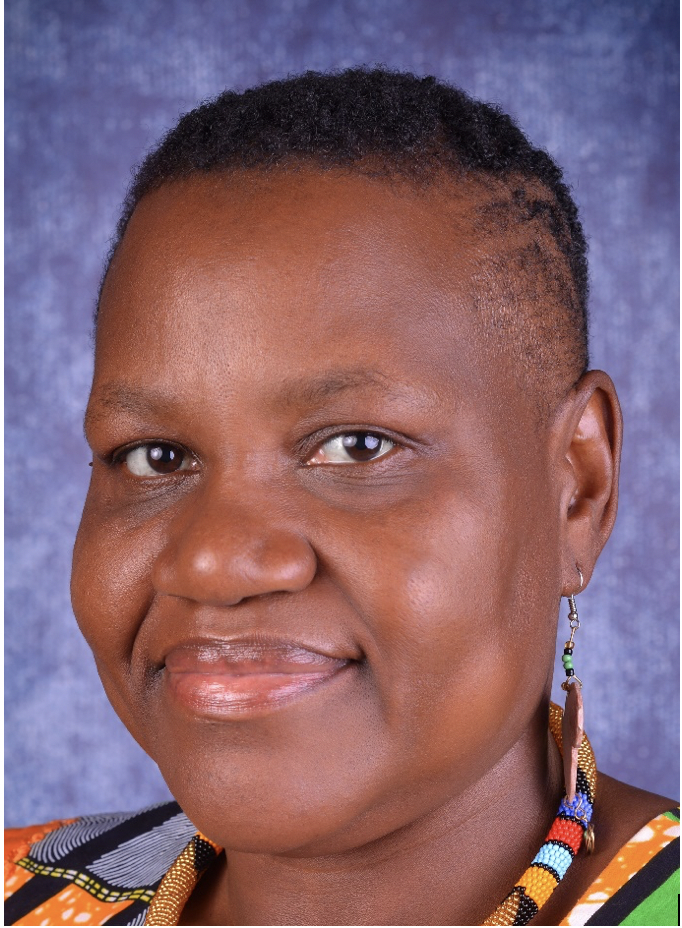ASSAY: A JOURNAL OF NONFICTION STUDIES
6.2
6.2
Eldoret, Kenya, 1983. Kaptagat Girls High School
“Open your books. Land Without Thunder. Go straight to the story with that title,” Miss Polie said at the beginning of class. She never had to raise her voice, but there was something about her that exuded this authority, something mysterious. Perhaps it was the grace in her gait as she walked through the classroom interacting with us, forming a rapport that was only peculiar to her style; or perhaps it was her unjudging smile as she guided us through the themes, ideas and nuances in a book or story. Her very presence in the classroom filled it with an aura of positive energy, and we responded to it eagerly. Today was no exception, and we were ready to read more stories in Land Without Thunder.
But for me, it was not going to be a start. I had already stayed late yesterday, and the day before yesterday, to read the stories in this collection. My candle flickering in the darkness of the dormitory, I had curled my entire frame close to the single flame, squinting as my eyes tried to discern the letters of every page in the glimmering, dim, single flame of the unconcerned candle. The darkness around me had not scared my soul or mind. Instead, it had seemed to shine brighter than ten candles, its presence obscured by the task at hand. My heart had focused on the book. Every word had resounded in my head, and the more I had read, the more I had relished the story: “To cast doubt in the minds of people going fishing in the mighty waters was like casting doubt in the minds of people going to war…” I had read. I was fishing in the mighty waters of education, not ready for even the darkness around me to intimidate me. The author was addressing me directly… “Anyango,” Miss Polie interrupted. “Why, your mind has traveled. It is not with us. What is going on?” She was at my desk, and I had not noticed her approaching, nor had I noticed her presence so close. “Sorry, Miss Polie,” I said. I opened my book and got ready to read the story aloud with the rest of the class. “Stop!” she would call from time to time. “I do not approve of that kind of reading,” she would say any time a classmate hesitated while reading. “This is what I want you to imagine. Close your eyes first!” There was a reason why Miss Polie’s classes were different. She was not only gracious, but she wanted us to be the best. In “Inspirations from Mama’s Two Wisdoms,” I described her thus: She taught with pomp and vigor, and she never let anyone or anything convince her that we were not capable of achieving anything we wanted to. We were her girls, and to her, we were the stars, dropped down from the heavens, only temporarily in order to brighten our shine and soar back up again, stronger and ready to take our definitive places in conquering the skies. I devoured her personality with valor, and took in her enthusiasm at every turn of it. (80-81) “Now take your imagination to a stage with the greatest splendor,” Miss Polie said. “You have been selected to meet the author and read her work in her presence. You are ushered into a room where she is sitting, waiting for you. You introduce yourself, tell her the portion you want to read, and pull together your best self for the show.”
My heart quickly carried my mind to that space. I felt chosen, selected, transported, and ready for the task at hand. Will I stretch my arm in humble greeting? Will I curtsy? Will I say anything? How will I address her? Madam author? Mrs. Ogot? Mrs. Grace Ogot? I would not call her Akinyi, although I would want to. That was the name Mama and Papa called me at home. I was born in the morning, and I was also named after my grandma, Anyango. Two names close in meaning. Perhaps I would say nothing much and go straight to my reading. Or perhaps I would say something. “Mrs. Ogot,” I would start, and struggle not to shake or stammer. Or maybe she would not mind if I did. But I would not. I was only fourteen but armed with a mind that did not tremble or fear. I was a girl looking up to her, and she would be pleased that I was studying hard in school to one day write like her. “Mrs. Ogot, nice to meet you…” I would say with a slight curtsy, stretching my right arm with the left one placed at the elbow of the right arm as a sign of respect among our people; yes, our people, Grace Ogot and me. “Mrs. Ogot, I would like to read from Land Without Thunder where the lake is raging and yet in the middle of all this, Owila thinks of his wife Apiyo…” “Read, my child,” she would probably say to me, endearingly, because, after all, I had shown my respect from the beginning and I had known what to do and say in her eminent, authorial presence. Maybe she would ask me why I wanted to read that part of the book. I would tell her that in the roughest time of his life, Owila is thinking of someone who brings joy to his life. I would then try to impress her by analyzing it further. I would say that Owila saw a ray of hope even in the valley of death. I would then read. “Owila thought of his wife Apiyo, beautiful, young and devoted.” Minding the commas and the full stop at the end, I would make sure I did not read in a staccato manner, but with feeling and thought.“When prophets foretold that the lake was rough and thirsty for human blood, Apiyo had pleaded with Owila not to go fishing. Such warnings in Uyoma never passed without incident...” Uyoma. Would I have a chance to pose a little and tell her that this is where my Mama came from, where I had visited my grandfather, traveling by boat in those very waters that were now raging on Owila? Would I… “Anyango!” I heard Miss Polie call again, this time with small agitation in her voice. “We are reading. Are you following?” “Yes…No.” She had disrupted my visit with Mrs. Ogot, without warning, without mercy, without apology. “I am reading to Mrs. Ogot. You told us to do so…” “Imagine. I said imagine,” she said again. Exactly. That is what I had done. I had imagined everything in a way that Miss Polie herself would be impressed with. Did I not lay out everything perfectly? Did I not read with courage, and without hesitation? Now, imaginary Mrs. Ogot, yet so real in my imaginative mind, was not going to listen to the rest of the paragraph. Someday, I thought, just someday, I would make this a reality. __________
Grace Ogot’s stories always resonated with me. As soon as I started reading them in school, I realized that there was something particularly special about them, and the study of oral literature. Then it dawned on me that this was how Mama had always told her stories. Mama, having no knowledge of English, reading or writing, had told us stories all the time in Dholuo, our mother tongue. Ours were storied lives, as we listened to Mama in the only language that she spoke well. Later, I would write in Stories of Living and Learning:
Growing up, I was always in awe of Mama’s wisdom. She was confident, and when she believed in something, it was hard to sway her in any way. She always had conviction and determination in her voice, and her love, laughter, admonition and grace all rang through the words she spoke. Mama owned a Bible in our ethnic language, Dholuo. I always knew she could not read English, but she read the Dholuo Bible fervently. Still, she was the best teacher I knew. Through her stories, proverbs, songs and anecdotes, she would teach us all the lessons we needed in life. She had a story for everything, and they always started with a proverb or an idiomatic expression. The characters in the stories had their dwelling in our family, and we would speak like Mama when we wanted to correct one another. Therefore, a person who was not clean was “Manya,” the character in Mama’s story who had to be urged by friends to go to the river and take a bath. The person who did not fulfill their duties would be “Oyundi,” Mama’s infamous character who feigned illness during work but showed up during meals. Any person who was witty and cunning would be “Romb K’Oyugi,” Mama’s legendary sheep who never behaved like sheep at all. While sheep are known to be meek and humble, “Romb K’Oyugi” were the opposite. They would cunningly leap behind women who carried bananas to sell, snatch the bananas and sit down to eat them while the women watched in disbelief. I did not know that these sheep truly existed until a few years after Mama passed away when I actually saw them at Oyugis market, the small town they inhabited, doing exactly what Mama had described to us for many years. Mama’s way of knowing became my way of knowing. In a culture where knowledge was transmitted through oral forms, she passed on her knowledge to me the best way she knew how. She did not have to read a book. Her storytelling became the way I framed my writing, and I saw and felt her influence in my way of thinking and writing. I learned about oral literature in high school with an indescribable passion and enjoyed the novels of African writers who depicted their influence from oral literature in their writing. (3-4) One of these African writers was, of course, Grace Ogot. Mama had been to me what Mrs. Ogot’s grandmother was to her. Having heard her stories from her grandmother, she celebrated them and later used them in her work, as told in Days of My Life:
My interest in writing… may have started at a very early age, stimulated by my childhood keenness to listen to my grandmother’s folktales. She was a renowned story teller. The artistic creations of our people, like our myths, legends, epics, poetry, proverbs, riddles, and music reveal a very old imagination which formed an essential part of the education of the Luo girl-child… She was the person, for example, who introduced me to the famous Luo myths such as Simbi Nyaima…My grandmother was thus a living library of oral literature. (91, 92) After Miss Polie’s challenge in class that had us close our eyes in imagination, I never stopped imagining that I would find myself talking to her one day, telling her how great it was to read her books full of an oral culture that I had deeply related to.
|
|
Leonora Anyango-Kivuva teaches English as an Academic Language (EAL) at the Community College of Allegheny County (CCAC) in Pittsburgh, PA. She values writing that includes voices from multiple cultures, and she guides her students to write their own stories as they learn English. Her first teacher of Creative Nonfiction was her mother who used oral storytelling techniques to tell her stories. She is in the process of completing her memoir, Inspirations from Mama’s Two Wisdoms.
|

